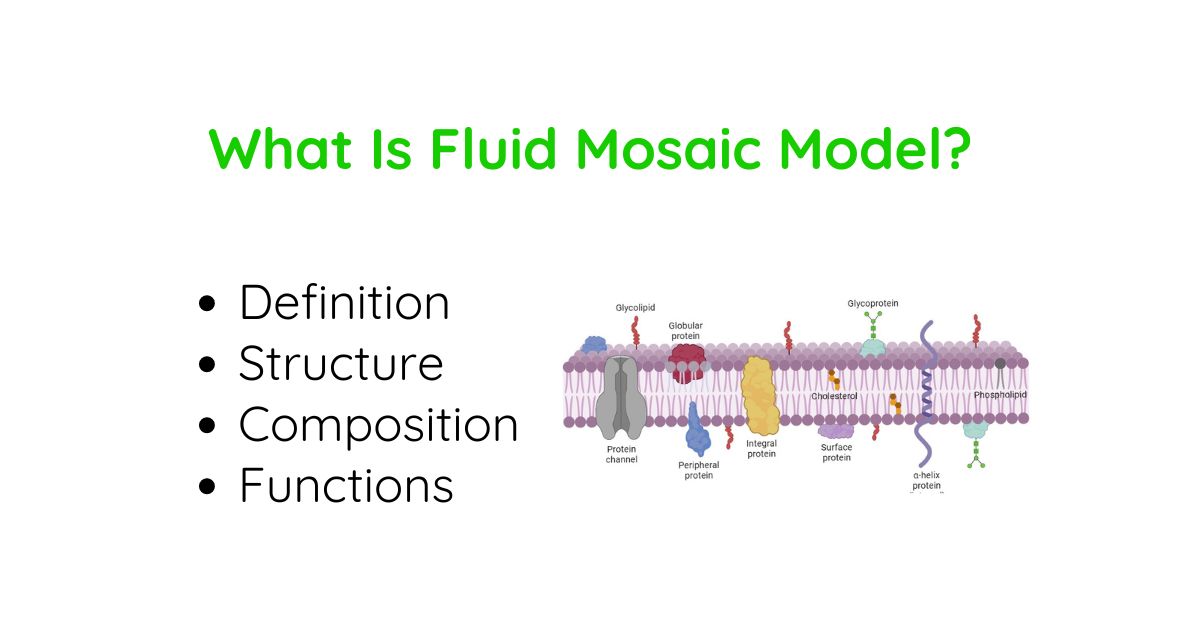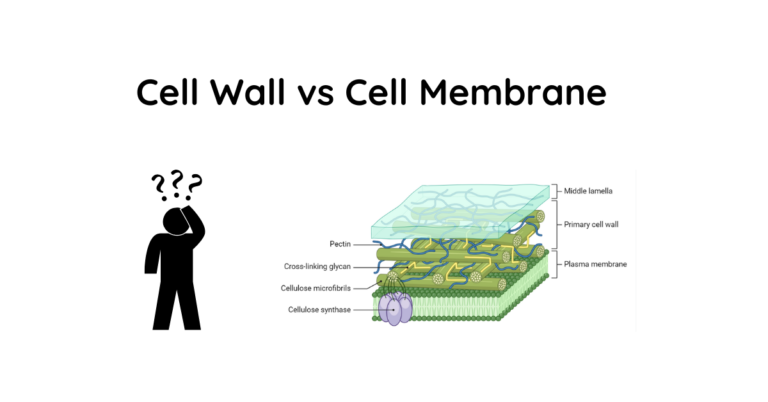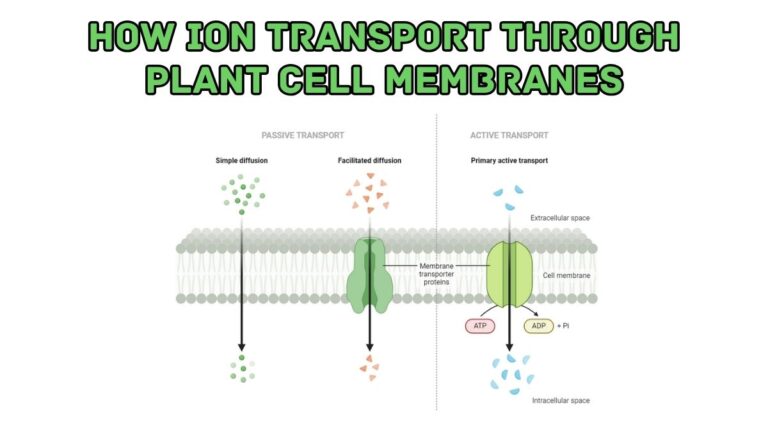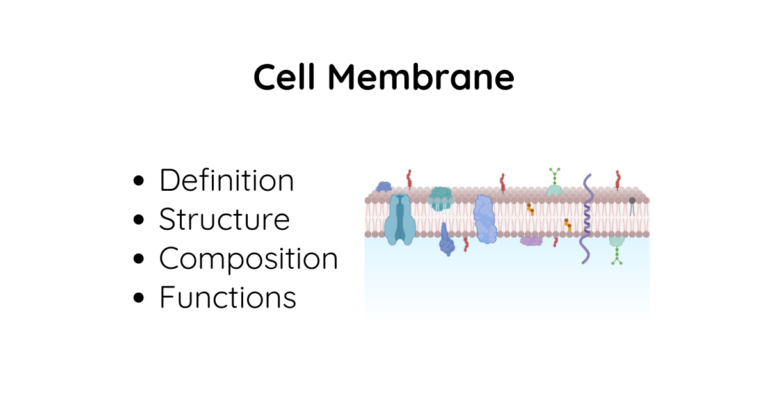Fluid Mosaic Model: Definition, Discovery, Components, Structure And Functions
Fluid Mosaic Model Definition
The fluid mosaic model defines the structure of cell membranes as a fluid phospholipid bilayer embedded with various proteins in a mosaic-like pattern. The membrane is fluid, allowing the components to move laterally, and contains integral proteins embedded within the membrane and peripheral proteins attached to the surface.
What Is The Fluid Mosaic Model?
The fluid mosaic model is a scientific model that describes the structure and behavior of biological membranes, particularly the plasma membrane that surrounds cells. It explains how the cell membrane is a dynamic and fluid structure composed of various molecules arranged in a mosaic-like pattern.
Discovery Of Fluid Mosaic Model
The fluid mosaic model was proposed in 1972 by two scientists, S.J. Singer and Garth L. Nicolson, based on their research and observations of the cell membrane structure.
Historical Timeline Of Fluid Mosaic Model
- 1920s: Gorter and Grendel proposed that phospholipids in the cell membrane are arranged in a bilayer.
- 1930s: Davson and Danielli suggested that proteins are arranged in layers above and below the phospholipid bilayer.
- 1972: Singer and Nicolson proposed the fluid mosaic model, which described the cell membrane as a fluid structure with proteins embedded in a phospholipid bilayer.
- Present: The fluid mosaic model has been refined and updated based on new discoveries, but it remains the most widely accepted model for describing the structure and behavior of biological membranes.
Why Is It Called Fluid Mosaic Model?
The cell membrane structure is called the fluid mosaic model for two main reasons:
- Fluidity: The membrane is fluid, with individual lipid and protein molecules able to diffuse rapidly and freely in the plane of the membrane. The membrane lipids are constantly moving laterally, giving membranes a dynamic, fluid structure rather than a static, fixed one. This fluidity is affected by temperature, fatty acid tail saturation, and cholesterol content.
- Mosaic structure: The membrane has a mosaic-like composition of diverse components, including phospholipids, cholesterol, proteins, and carbohydrates. These components are distributed non-uniformly in the membrane, forming a pattern resembling a mosaic tile artwork. Integral proteins are embedded at various places in the fluid lipid bilayer.
Fluid Mosaic Model Diagram
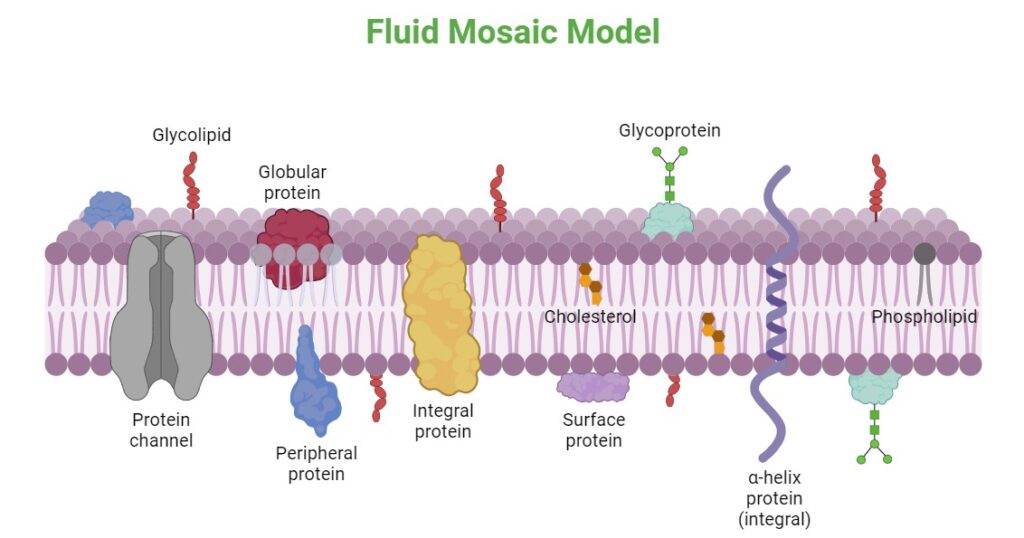
Fluid Mosaic Model Structure
The fluid mosaic model describes the cell membrane as a phospholipid bilayer with various components embedded or attached to it:
- Phospholipids: The main fabric of the membrane, forming a bilayer with their hydrophobic tails facing inward and hydrophilic heads facing outward.
- Cholesterol: Molecules found between the phospholipids, helping to maintain membrane fluidity.
- Integral proteins: Proteins that are embedded within the phospholipid bilayer, either partially or completely spanning the membrane.
- Peripheral proteins: Proteins that are loosely attached to the surface of the membrane, either on the inner or outer side.
- Carbohydrates: Attached to some proteins and lipids, forming glycoproteins and glycolipids, respectively.
Components Of Fluid Mosaic Model
The fluid mosaic model consists of the following main elements:
- Phospholipids: Amphipathic molecules with a hydrophilic head and hydrophobic tails, forming the basic structure of the membrane.
- Cholesterol: Steroid molecules that help maintain membrane fluidity and permeability.
- Integral proteins: Proteins that are embedded within the phospholipid bilayer, either partially or completely spanning the membrane.
- Peripheral proteins: Proteins that are loosely attached to the surface of the membrane, either on the inner or outer side.
- Carbohydrates: Attached to some proteins and lipids, forming glycoproteins and glycolipids, respectively.
What Are The Functions Of Fluid Mosaic Model?
The fluid mosaic model explains various functions of the cell membrane, including:
- Selective permeability: The membrane acts as a barrier, allowing only specific molecules to pass through while blocking others.
- Cell signaling: Proteins embedded in the membrane can act as receptors for signaling molecules, enabling communication between cells.
- Enzyme activity: Some membrane proteins have enzymatic functions, catalyzing chemical reactions.
- Cell recognition: Carbohydrates on the membrane surface can act as markers for cell recognition and adhesion.
- Transport: Membrane proteins facilitate the transport of molecules across the membrane through various mechanisms, such as diffusion, facilitated diffusion, and active transport.
Why Fluid Mosaic Model Important For Cell Membrane?
The fluid mosaic model is important for the cell membrane because:
- The fluid mosaic model explains the dynamic and fluid nature of the membrane, allowing for lateral movement of components.
- The mosaic structure of different molecules, including phospholipids, proteins, and carbohydrates.
- Selective permeability of the membrane, allows some molecules to pass through while blocking others.
- Fluid mosaic structure helps cell signaling, transport, and enzyme activity in cell membranes.
What Part Of The Cell Membrane Acts Like A Fluid?
In the fluid mosaic model, the phospholipid bilayer acts like a fluid. The phospholipid molecules are not rigidly fixed in place but can move laterally within the membrane, giving it a fluid-like property.
What Is Meant By Membrane Fluidity?
Membrane fluidity refers to the ability of the components within the cell membrane to move and change positions. It describes the dynamic nature of the membrane, where molecules can move laterally and rotate within the plane of the membrane.
Why Is Membrane Fluidity Important?
Membrane fluidity is important for several reasons:
- Selective permeability: The fluidity of the membrane allows for the movement of specific molecules across the membrane through protein channels or carriers.
- Cell signaling: Membrane fluidity enables the movement and clustering of receptors and signaling molecules, facilitating cell communication.
- Enzyme activity: Many enzymes are embedded in the membrane, and their activity depends on the fluidity of the membrane environment.
- Cell fusion and division: Membrane fluidity is essential for processes like cell fusion, cell division, and vesicle formation, where the membrane needs to be flexible and dynamic.
- Adaptation to temperature changes: Organisms can adjust the fluidity of their membranes by altering the lipid composition to adapt to different temperature conditions.
Why Is The Fluid Mosaic Model Most Accepted?
There are number of reasons why is the fluid mosaic model is the most widely accepted model for cell membranes:
- Experimental evidence: Various experimental techniques, such as electron microscopy, X-ray diffraction, and fluorescence microscopy, have provided evidence supporting the fluid mosaic model.
- Explanatory power: The model can explain various membrane-related phenomena, such as selective permeability, cell signaling, and transport processes.
- Adaptability: The model has been refined and updated over time to incorporate new discoveries and observations, making it flexible and adaptable.
- Simplicity: Despite its complexity, the fluid mosaic model provides a simple and intuitive representation of the membrane structure, making it easier to understand and communicate.
What Advantage Does A Cell Membrane Have Being A Fluid Mosaic Model?
The fluid mosaic model of the cell membrane provides numerous advantages:
- The lateral movement of membrane components allows for dynamic processes, such as cell signaling, transport, and membrane fusion/fission.
- The mosaic arrangement of proteins and lipids enables the selective passage of molecules across the membrane.
- The membrane can adapt to changes in temperature and environmental conditions by altering its lipid composition and protein distribution.
- The membrane separates the cell from its environment and maintains internal compartmentalization, enabling different biochemical processes to occur simultaneously.
- The presence of specific proteins and carbohydrates on the membrane surface allows for cell recognition and adhesion processes.
What Are The Disadvantages Of The Fluid Mosaic Model?
While the fluid mosaic model is widely accepted and useful, it does have some limitations and disadvantages:
- Oversimplification: The model simplifies the complex structure and dynamics of biological membranes, which can be more intricate in reality.
- Lack of detail: The model does not provide detailed information about the specific interactions and arrangements of membrane components.
- Static representation: The model represents a snapshot of the membrane structure, while in reality, the membrane is highly dynamic and constantly changing.
- Membrane asymmetry: The model does not fully account for the asymmetric distribution of lipids and proteins between the inner and outer leaflets of the membrane.
- Membrane domains: The model does not explicitly address the existence of specialized membrane domains, such as lipid rafts, which have been discovered through more recent research.
Read: Plant Cell – Definition, Structure, Types, Functions, and Important
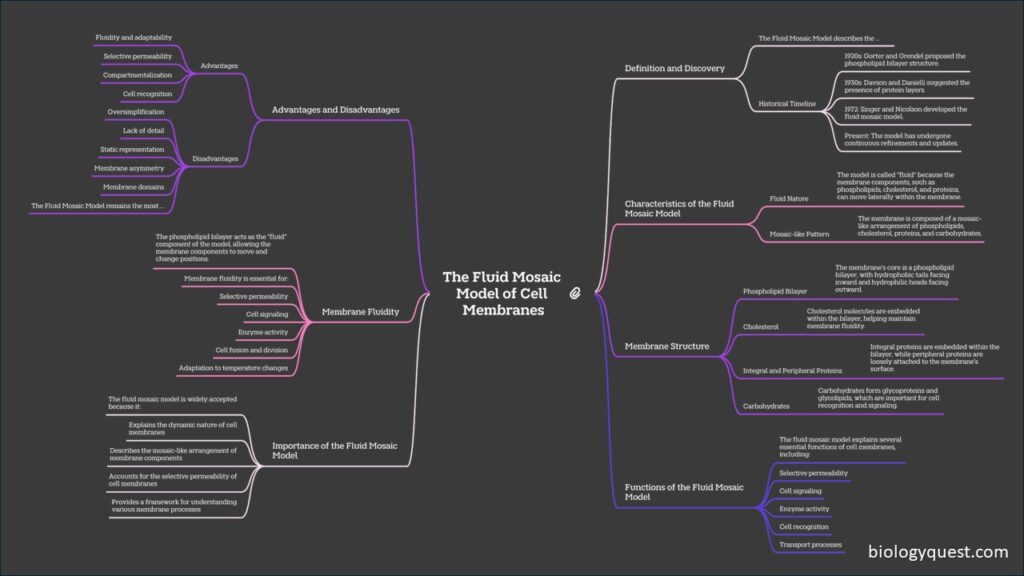
FAQs Of Fluid Mosaic Model
Who Proposed The Fluid Mosaic Model?
The fluid mosaic model was proposed in 1972 by S.J. Singer and Garth L. Nicolson, two scientists who studied the structure and behavior of biological membranes.
What Role Do Phospholipids Play In The Fluid Mosaic Model?
Phospholipids form the basic structure of the membrane, creating a bilayer with hydrophilic heads facing outward and hydrophobic tails facing inward, providing a barrier that is selectively permeable.
How Does Cholesterol Affect The Fluidity Of The Membrane
Cholesterol is interspersed among the phospholipids and helps to maintain membrane fluidity by preventing the fatty acid chains from packing too closely in cold temperatures and by restraining excessive movement in warm temperatures.
How Do Carbohydrates Contribute To The Fluid Mosaic Model?
Carbohydrates are attached to proteins (forming glycoproteins) or lipids (forming glycolipids) on the extracellular surface of the membrane. They play a crucial role in cell recognition, signaling, and adhesion.

